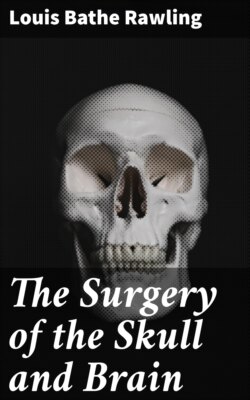Читать книгу The Surgery of the Skull and Brain - Louis Bathe Rawling - Страница 59
На сайте Литреса книга снята с продажи.
(a) Depressed fractures.
ОглавлениеDepressed fractures either result from injury received during the birth of the child—whether from forceps delivery or from the pressure exerted on the head by a contracted pelvis—or from blows received shortly after birth.
Fig. 23. A Depressed Birth-fracture.
The depression, varying greatly in depth and extent, may be situated over any part of the skull, but commonly involves the fronto-parietal region. It is often obscured in the early stages by the presence of an overlying hæmatoma, the condition perhaps only being discovered after the absorption of the blood-clot. In many cases no symptoms result, partly owing to the shallowness of the depression and partly due to the situation of the lesion over one of the so-called ‘silent’ areas of the brain. Under other circumstances the child may evidence the general increase in the intracranial pressure by cyanosis, difficulty in respiration, unconsciousness, and slow pulse. The anterior fontanelle will be tense, and pulsation will be absent or greatly diminished—a feature of the greatest diagnostic value. Localizing symptoms ensue when an extensive depression is situated over the motor area, the extremities of the opposite side being flaccid, or evidencing irritation by twitchings and convulsions. The ready response of the infant to cortical irritation frequently results in the early transformation of local twitchings into general convulsions.
